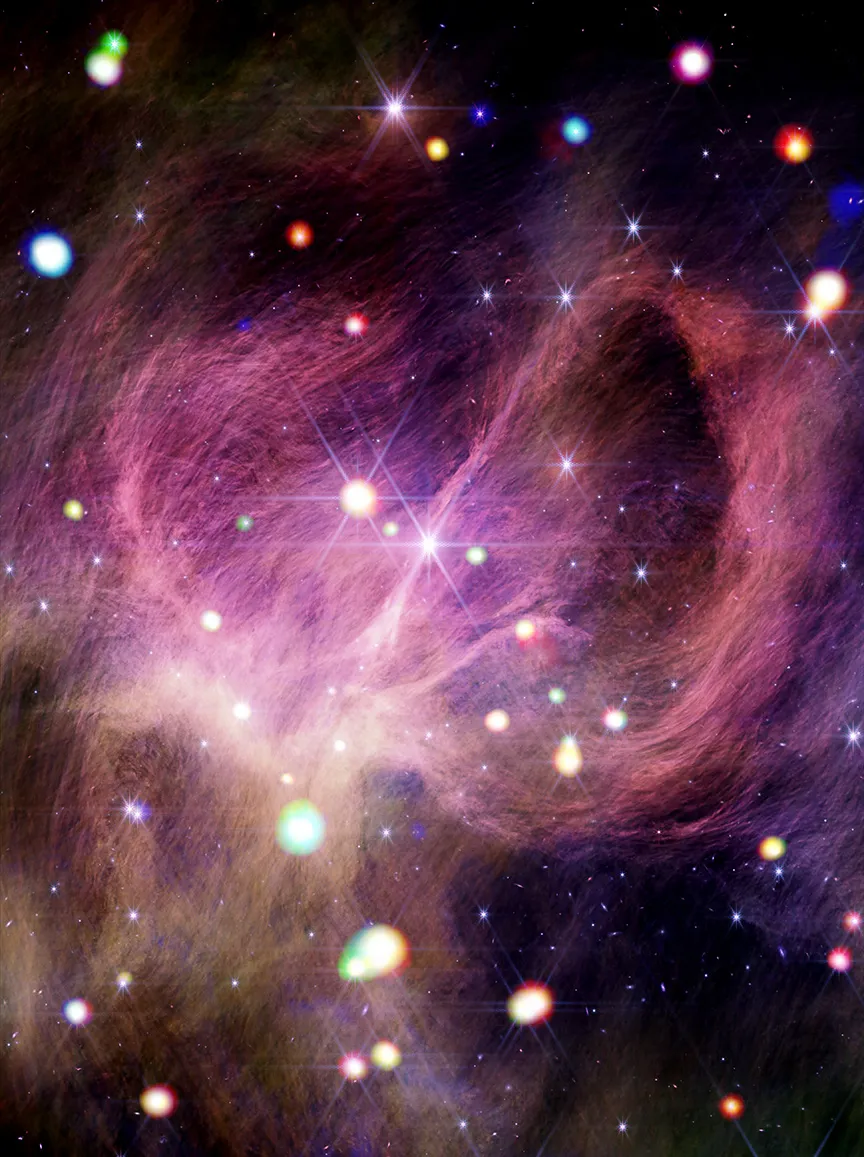IC 348 Region: Chandra and Webb Reveal Young Stars

Introduction
The IC 348 star-forming region in the Perseus constellation has been revealed in extraordinary detail through the combined power of NASA’s Chandra X-ray Observatory and the James Webb Space Telescope. Released on July 23, 2025, this composite image blends X-ray and infrared data to showcase the hidden processes of stellar birth and the beauty of interstellar clouds.
A Dual View of the Cosmos
Chandra’s X-ray data appear in red, green, and blue. These colors highlight energetic young stars. Webb’s infrared observations glow in pink, orange, and purple, tracing cooler dust and gas. Together, the two perspectives create a layered view of IC 348. This allows astronomers to study both the hot, high-energy activity of star formation and the cooler structures that cradle new stars.
The Role of the Reflection Nebula
The wispy, cloud-like structures dominating the image are interstellar material. Gas and dust scatter and reflect starlight, creating what astronomers call a reflection nebula. These nebulae act as cosmic mirrors. They illuminate the regions where stars are born and shape the environment of young stellar clusters.
Young Stars in Formation
The point-like sources visible in Chandra’s X-ray data are young stars still developing within IC 348. These stars emit strong X-rays as they accrete material and generate powerful magnetic activity. By combining X-ray and infrared data, scientists gain a clearer view of how stars evolve from dense clouds of gas into fully formed suns.
Why This Discovery Matters
Studying regions like IC 348 helps astronomers answer fundamental questions. How do stars form and evolve? What role do nebulae play in shaping stellar nurseries? And how do high-energy processes influence the birth of planetary systems? The collaboration between Chandra and Webb provides a multi-wavelength toolkit for exploring these mysteries. Moreover, it demonstrates how combining different observatories leads to deeper insights.
Explore More
For more on Webb’s infrared discoveries, visit NASA’s James Webb Space Telescope gallery. To learn about Chandra’s contributions, explore Chandra’s X-ray mission. You can also browse related sections on this site, including Astronomical Discoveries, Space Missions, and Space Science & Education.
Image Credits: X-ray: NASA/CXC/SAO; Infrared: NASA/ESA/CSA/STScI; Image Processing: NASA/CXC/SAO/J. Major. Text Credit: Megan Watzke.


Incredible to see how technology lets us peek into the earliest stages of stellar evolution. Keep it up.
simply mesmerising, man
idk
i mean oher than the stars, in taht picture, in the bg it seems like space cotton candy lol
Yo, just grabbed the Lotus365 app! Download was smooth, no dramas. Seems like a decent platform for a bit of fun. Check it out here: lotus365appdownload
Dailyjililoginregister streamlines the whole process, which I appreciate. Registration was quick and painless, and logging in everyday is a breeze. If you’re tired of complicated sign-ups, give it a shot: dailyjililoginregister.
Heard about vn888club from a friend. They seem to have a pretty active community, which is kinda cool. Feels less lonely gambling when you know other people are out there losing their money too! Haha, just kidding (mostly). Give it a check if you like that community vibe: vn888club.
Hey ka-dreamers! Been playing on dreamjijli lately and the payouts are pretty sweet. Sulit talaga! Just remember to gamble responsibly, mga kababayan!
Tried my luck with zero1bet last night. Had a decent run! The site looks modern and loads quickly, which is a big plus. Anyone else giving it a shot?